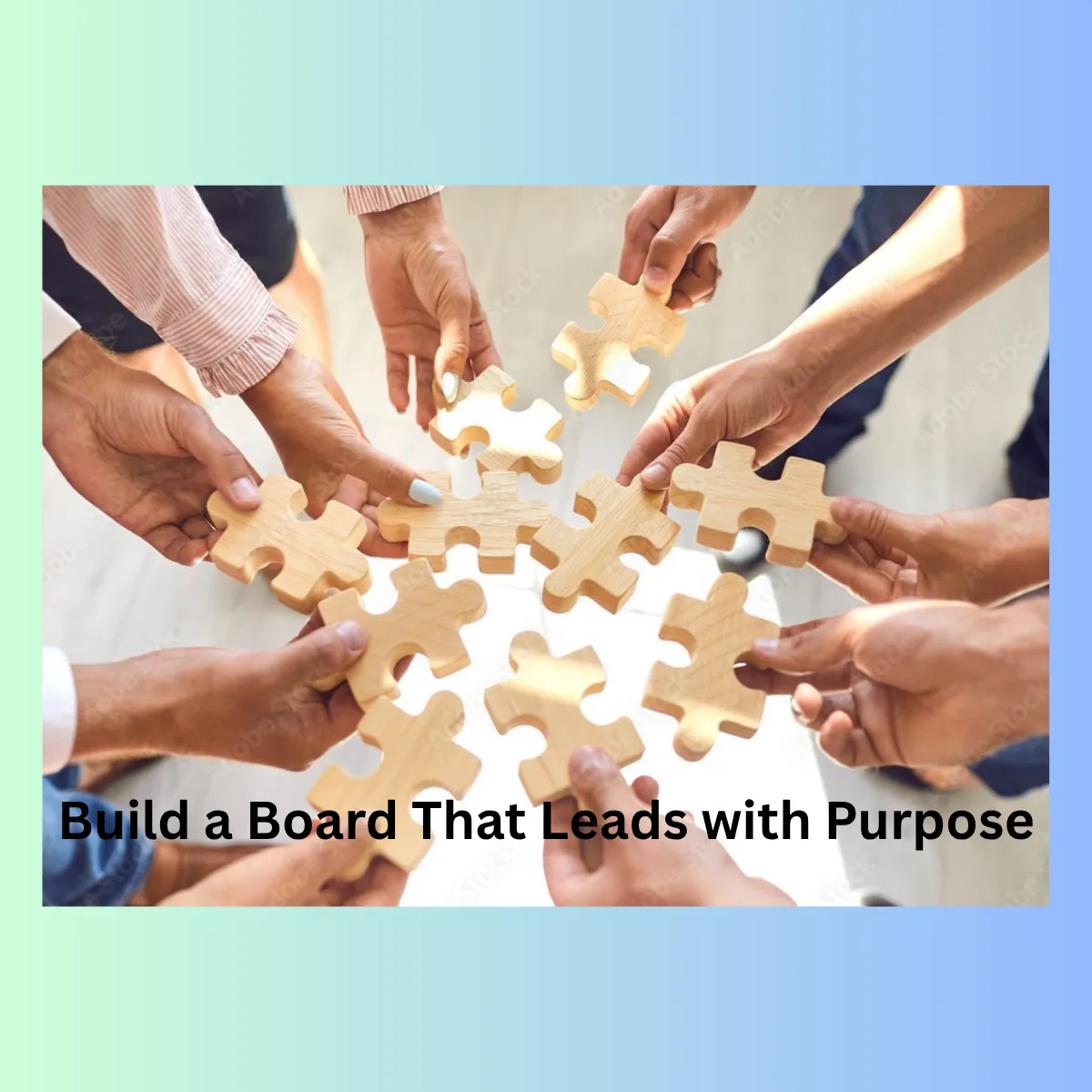
Building Your Dream Board: Recruiting and Retaining the Right Members
Many new founders think of their nonprofit as “their” organization, but legally and practically, it belongs to the board. The board governs the nonprofit, sets direction, and ensures accountability. The founder may be the visionary, but the board is the decision-making body that keeps everything on track. That’s why it’s so important to recruit people who not only believe in your mission but also have the skills, time, and temperament to help lead effectively.
Every nonprofit founder dreams of having a strong, reliable, and passionate board – with members who work together like a well-tuned orchestra. But that kind of synergy doesn’t happen by accident. Building a great board takes strategy, honesty, and the courage to make tough decisions when things aren’t working.
Recruit with Intention
The best board members often come from your network or from the networks of people already involved with your nonprofit. Don’t be afraid to ask for referrals from trusted peers, partners, or community leaders. You can also post opportunities through your local community foundation, United Way, or volunteer-matching platforms like VolunteerMatch.org.
When you meet potential candidates, take time to get to know them. Do they share your values? Are they passionate about your mission – and willing to commit to doing the work? Enthusiasm is wonderful, but it has to be paired with accountability.
Building a strong board starts with clarity – both about what your organization needs and what you expect from your board members. Before you start recruiting, take a look at who’s already at the table. Do you have people with financial expertise? Marketing or fundraising experience? Community connections? Legal knowledge? Your goal is to fill the gaps, not add more of what you already have.
Just as important as skills, though, is perspective. A well-rounded board should reflect the diversity of the community you serve. That means seeking out people of different ages, races, genders (unless your mission is gender-specific), socio-economic backgrounds, and lived experiences. You also want a mix of thinkers and doers – those who bring strategic vision as well as those who roll up their sleeves to get things done. Don’t shy away from people who might challenge your ideas from time to time. A board that respectfully questions assumptions will help your nonprofit grow stronger and more resilient.
A great board isn’t just made up of people who care deeply (though that matters). It’s made up of people who bring something essential to the table.
Avoid the Overcommitted Star
It can be tempting to invite that “super-volunteer” or well-connected community leader who already serves on several boards. They may have incredible experience, but if they’re stretched too thin, your organization may only get their name but not their time, ideas, or active involvement. Look for people who have the capacity to truly participate.
Be Crystal Clear About Expectations
One of the most common mistakes founders or other board member recruiters make is not setting clear expectations up front. You may think you will get more yeses if you sugarcoat the expectations, but you may also end up with very frustrated board members. Before anyone joins your board, make sure they understand what’s involved:
How often the board meets
Whether attendance at events or volunteer activities is expected
The financial commitment (“give or get” policies, annual donations, or fundraising participation)
Committee involvement and other responsibilities
A clear, written board member agreement helps prevent confusion later and ensures everyone starts on the same page.
Handling Mismatches Gracefully
Even with the best recruiting process, sometimes things just don’t work out. I’ve had board members who weren’t team players, refused to collaborate, or resisted sharing progress on projects. Others simply didn’t have the time or energy to stay engaged. In a couple of cases, I had to have difficult conversations that led to resignations and, truthfully, the board was stronger and less stressed afterward.
It’s never easy, but a healthy board culture depends on mutual respect, accountability, and trust. If someone isn’t a good fit, addressing it sooner rather than later is the kindest thing for both the person and the organization.
Keep the Good Ones Engaged
Recruiting is only half the battle — retaining great board members requires keeping them inspired.
Celebrate wins and show impact often.
Read a thank you note or other recognition that you are making a difference at each meeting to remind your members why you do what you do.
Make meetings meaningful and efficient.
Give members real opportunities to lead and contribute their skills.
Check in individually to see how they’re feeling about their experience.
When board members feel valued and connected to the mission, they’ll stay motivated to give their best.
Final Thoughts
Building a strong board takes time, but the effort pays off in every area of your nonprofit’s success. A thoughtful mix of skills, clear expectations, and a healthy team culture will set the foundation for sustainable growth and long-term impact.
Until next time, keep leading with passion and purpose. 💌
Have a question or want to share your thoughts? Email me at [email protected] — I’d love to hear from you.
